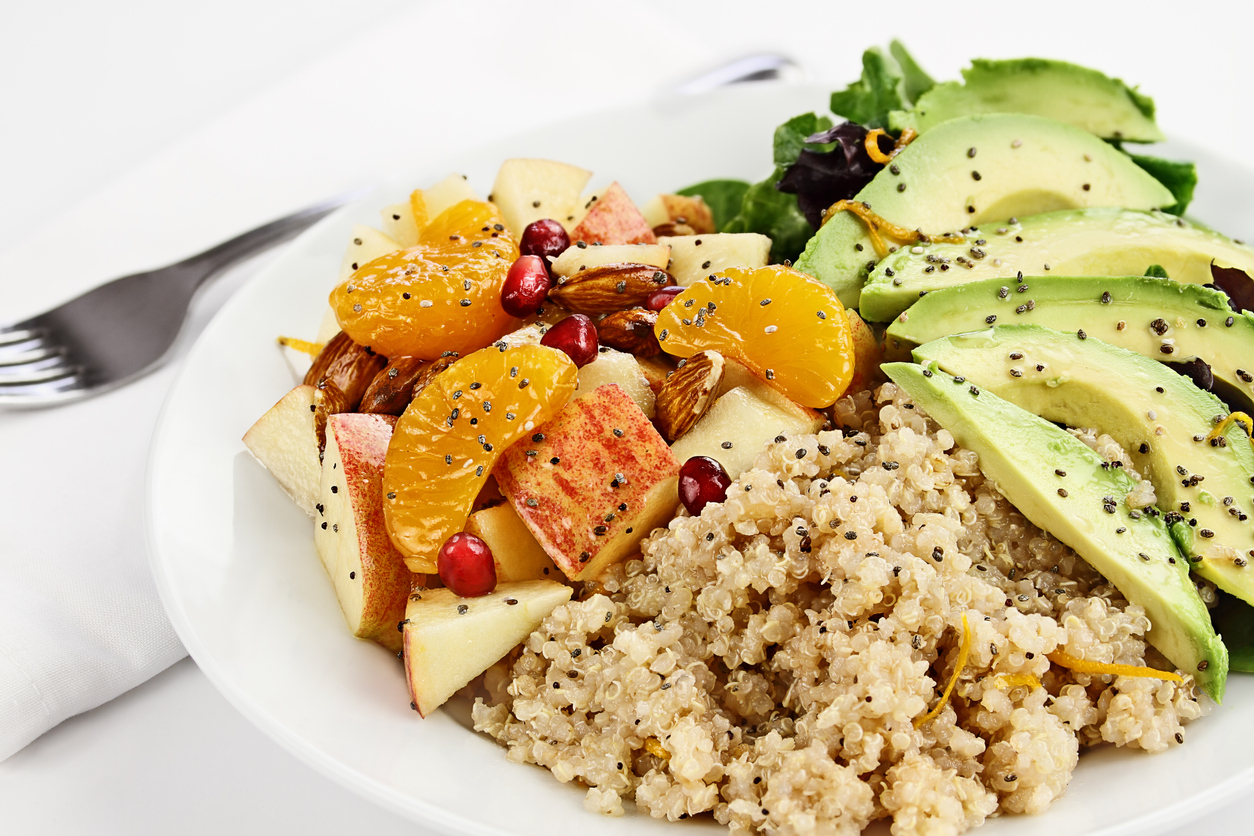As well as being essential for growth and repair of body tissue, amino acidsAmino acids are commonly known as the building blocks of protein. There are 20 standard amino acids from which almost all proteins are made. Nine… are used to make hormones, enzymes and antibodies required for immunity, as well as neurotransmitters (chemicals of communication) such as adrenalin and serotoninSerotonin is a hormone found naturally in the brain and digestive tract. It is often referred to as the ‘happy hormone’ as it influences mood…., which control your stress response and mood respectively. Both the quality of the proteinProteins are large molecules consisting of chains of amino acids. Proteins are essential nutrients for the human body – they are a building block of… you eat, determined by the balance of these eight essential amino acids, and the quantity you eat, are important.
If you are building a house, you need a certain amount of bricks, cement, wood and so on. Imagine each essential amino acid as one of these building components. If one is lacking, you can’t build a house.
Having foods, or food combinations, that provide close to the perfect balance of amino acids is important. A food that naturally contains all the eight essential amino acids is called a complete protein. Of course, animal protein is complete protein but, in turn, it was made from what the animal ate. A vegetarian animal, such as a sheep, derives all its protein from vegetable sources, such as grass. The same thing is true with fish through the food chain: a carnivorous fish, such as mackerel, eats a smaller fish, which ate a tiny organism called plankton, which derived its protein from algae or seaweed.
Traced back in this way you can see that all protein ultimately derives from vegetable protein, which illustrates why vegetable protein is perfectly appropriate as a source of protein for everyone. Let’s start by examining which foods give you the best quality of protein before we look at how much you need, since the better the quality of protein the less quantity you will need.
It’s like building a house with less waste because you have everything you need and no more. High-class proteins The best foods to eat for protein are not necessarily those that are highest in protein to the exclusion of everything else. We don’t just eat food to get one specific nutrient. The pros and cons of a food’s other nutritional constituents have to be taken into account to enable us to make an informed decision about the healthiest foods to eat. Comparing animal and vegetable sources of protein is interesting: for example, a lamb chop provides 25 per cent of total calories as protein and 75 per cent as fatThere are many different types of fats; polyunsaturated, monounsaturated, hydrogenated, saturated and trans fat. The body requires good fats (polyunsaturated and monounsaturated) in order to…, much of which is saturated fatSaturated fats should be avoided wherever possible as they increase the amount of cholesterol in the blood and increase the risk of developing heart disease…..
Therefore, even though it provides a lot of protein it also contains a lot of fat. Chia seeds provide only 18 per cent of total calories as protein, so they might be deemed a lesser source of protein, but what else do they provide? Forty-seven per cent of calories in chia is fat, primarily polyunsaturated fats, and the remainder (35 per cent) is in the form of slow-releasing carbohydrates (those carbs that release their sugar slowly, as I will explain in detail in Chapter 7). Also, although those carbs count towards the calories, much of it is in the form of insoluble fibreFibre is an important part of a balanced diet. There are two type of fibre; soluble and insoluble. Insoluble fibre helps your bowel to pass…, which is the best kind of fibre, plus magnesiumWhat it does: Strengthens bones and teeth, promotes healthy muscles by helping them to relax, also important for PMS, important for heart muscles and nervous… and other nutrients. So, chia seeds are a good all-round food.
I explain the protein options in more depth in my book Optimum Nutrition for Vegans.
OPTIMUM NUTRITION FOR VEGANS
If you are finding it challenging being a healthy vegan or are considering becoming vegan/more plant based but lack the confidence to take the leap, then try my new book Optimum Nutrition for Vegans published in December 2020 (Piatkus).
I explain how to get enough protein and brain fats, control your sugar and energy, ensure you maintain sufficient vitamin and mineral levels and other small steps that maintain a good overall health.
I also cover what to eat, and in what combination, to achieve the best of health with clear principles for how to get enough good quality protein by combining foods, slow release carbs and essential fats. Plus 100 delicious easy vegan recipes that will nourish your body and your brain.


Comments
Join the Conversation on our Facebook Page